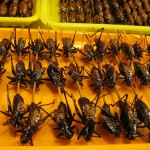

Surprise! Surprise! Dr. Oz is now recommending IF (Intermittent Fasting)!
Originally from –
Dr. Oz now recommending IF (Intermittent Fasting) – SparkPeople


Surprise! Surprise! Dr. Oz is now recommending IF (Intermittent Fasting)!
Originally from –
Dr. Oz now recommending IF (Intermittent Fasting) – SparkPeople
Chronic Inflammation and Circadian Rhythm 2 Comments Wednesday, September 18th, 2013 Written by: Kevin Cann In my last article I explained the suprachiasmatic nucleus’ (SCN) role in maintaining our circadian rhythm. If you have not read that yet you can do so here, http://robbwolf.com/2013/08/15/maintaining-natural-balance/. Due to the SCN’s role in maintaining the natural states of hormones we must ensure our lifestyles follow a path for this piece of the hypothalamus to function properly. In this article I am going to discuss the role inflammation plays on the SCN.Studies have shown that the SCN is affected by chronic inflammation. The good thing though is that any damage done may be reversible (http://www.ncbi.nlm.nih.gov/pubmed/17936367). We are all under chronic stress whether we admit it or not. Money problems, family issues, sitting in traffic, decreased sleep window, the foods we choose to eat, etc. all play a part in our overall health. One way they affect our health is the dysfunction that they may cause in our SCN.In addition to the cells of the SCN being altered by inflammation, they are also targeted during the aging process (http://www.ncbi.nlm.nih.gov/pubmed/16687317). Perhaps this is why some people who make poor lifestyle choices age more quickly than those living a healthier lifestyle. For example, we all know that smoking tends to age people more quickly. Smoking affects the cells of the SCN (http://www.sciencedirect.com/science/article/pii/S0169328X99000042).Most studies on the SCN focus on subjects that are subjected to shift work. This is due to the unnatural 24 hour sleep-wake cycle that they are accustomed to. Basically, not getting enough sleep induces a release of pro-inflammatory cytokines. This alters our immune response as well as most of our physiological processes (http://www.jimmunol.org/content/185/10/5796.short). This may be a mechanism behind why we tend to get sick more easily under high stress conditions or limited sleep.New evidence is suggesting that there may be bidirectional communication between the immune system and our SCN (http://www.sciencedirect.com/science/article/pii/S0006899308018131). This is important to understand because anything that we do to elicit an immune response is going to affect our circadian rhythm. This includes the foods that we eat.This bidirectional communication may be important to understand to help control food intake. Our SCN plays a role in the regulation of our energy homeostasis hormones as I explained in my previous article. The SCN may also play a role in the timing of food intake as well as metabolic state (http://onlinelibrary.wiley.com/doi/10.1002/1096-9861(20010319)431:4%3C405::AID-CNE1079%3E3.0.CO;2-D/abstract?deniedAccessCustomisedMessage=&userIsAuthenticated=false). Therefore, if we are consuming foods that elicit an immune response it will affect the SCN. This in turn may lead to a cycle of dysfunctional eating and all the hormones associated with energy homeostasis.Insulin secretion effects the SCN as well. Earlier in the article I mentioned how stress affects the SCN. This is due to an inverse relationship between the sympathetic nervous system and the SCN. Insulin secreted into the SCN causes a decrease in sympathetic activity (http://www.ncbi.nlm.nih.gov/pmc/articles/PMC303506/). Circadian dysfunction may then play a role in stress eating. Which in turn causes more issues in the SCN and the cycle continues and health continues to spiral downward.What all this is teaching me is that there is never going to be one simple solution to cure disease or obesity. Western science is too entrenched in one disease, one cure. Most diseases share multiple facets in their pathophysiology and one of them is inflammation. It is important to understand that health is a spectrum. The more we can do to encourage positive gene expression the healthier and longer we will live.About Kevin Cann Kevin is owner of Genetic Potential Nutrition. He is a holistic nutritionist, wellness coach, and strength coach.
This article is from:


Fight or Flight 1 Comment Thursday, September 12th, 2013 Guest post by: Tyler MintonI woke up on the cold bathroom floor. I knew I hadn’t fallen asleep, but couldn’t remember exactly at what point I had pulled myself out of the tub filled with hot water and epsom salt. After taking a minute to climb to my feet, I find my way to the scale. My eyes are shaky so I lean closely to see a dreadful number; 175. Still five pounds away from my goal
Credit –


Even the some of the strictest Paleo practitioners choose not to incorporate fasting into their nutritional strategies..But with intermittent fasting as an option, is this a mistake?Calorie restriction has gained traction as of late – In the pursuit of the ever elusive fountain of youth.. Anti-aging groups report that calorie restriction extends life span.. and while they do make a solid case for calorie restriction, and have scientific proof to back up these claims..We think that is simply taking things to the extreme… and as always, there’s a smarter way.A growing segment of people are starting to learn of the benefits of intermittent fasting..Particularly, the health benefits associated with being in a fasted state..
See original article:
To Fast, Or Not To Fast? | paleoIQ – The Smart Paleo Diet Blog


You’ll probably call me a nerd for this, but I’m like a little kid at the candy store every month when I get my TT Trainer newsletter info from my fitness coach, Craig Ballantyne.Here’s a classic pic of Craig B and I at the very first TT Summit:I’ll set out a block of time and read every single word of his newsletter.I don’t know how Craig Ballantyne does it, but he always seems to find the most cutting-edge fat burning studies before me…… and I’m subscribed to dozens of fitness newsletters.And he may have found the best study yet…More importantly, this study is going to help you increase post-exercise calorie afterburn by 450%.It’s great to see the science catching up to support the type of workouts that he has been publishing online and in Men’s Health magazine for over a decade.Consider this the New Rule of Metabolic Resistance Training.Because quite frankly, MOST “MRT” workouts are not true metabolic resistance training. In fact, I’ve seen loopholes in many programs published on the web and magazines. I’ll get to that soon. But first, check out this study…Italian researchers compared what they called “High Intensity Interval Resistance Training” (HIRT) against traditional resistance training. (Reference: J Transl Med
Originally posted here:


You Are What Your Mother and Father (and Grandmothers and Grandfathers) Ate On September 11, 2001, passenger jets struck the Twin Towers, leveling them, killing thousands of New Yorkers, and traumatizing tens of thousands more. Among those directly affected, but not killed, by the attack were 1700 pregnant women. Some of those women developed post traumatic stress disorder, some did not.
See the article here:
You Are What Your Mother and Father (and Grandmothers and Grandfathers) Ate


AudioThe One About Intermittent Fasting and Eat-Stop-Eat with Brad PilonStandard Podcast[ 59:16 ]DownloadChances are, by now, you’ve heard of–perhaps even tried–Intermittent Fasting (IF). If so, you can thank this guy, Brad Pilon and his original adventure into the modern revision of Intermittent Fasting.Don’t know IF, or want to know more about it? You’ve come to the right place. This is an interview I did some months ago with, Brad Pilon, the creator of the Eat-Stop-Eat approach to IF.If you want to…turn on your metabolism burn more body fat fast change your nutritional awareness gain food freedom and really just grow your relationship with food How “not eating” can help ADD Muscle
Taken from:
The One About Intermittent Fasting and Eat-Stop-Eat with Brad Pilon …
Meal Frequency 19 Comments Thursday, July 18th, 2013 Written by: Kevin Cann Many nutritionists, dieticians, and doctors have advised clients to eat more frequently throughout the day. The idea behind this eating schedule is it better controls blood sugar, which in turn controls cravings and hunger. By controlling cravings and hunger, the thought is the individual will consume less food and ultimately less “junk” food. The logic makes sense, but I do not feel the science is there to back it up. On the contrary, people partaking in intermittent fasting (IF) and raving about it is on the rise, and this may be a dangerous undertaking. From an evolutionary standpoint, when did we begin to consume set meals? Throughout history our meal times were variable. Our paleolithic ancestors were not sitting down at 8am, 12pm, and 5pm for their daily meals. Due to this the human body has developed a means to go an extended amount of time without food and survive. We can go weeks without food through a process known as gluconeogenesis. Gluconeogenesis is a catabolic process initiated by cortisol. Our tissues in our body are carried to the liver and broken down into their amino acids to be converted into glucose. This is a great phenomenon to survive a famine, but not so great for sustainable weight loss. In fact gluconeogenesis induces insulin resistance and may be why stress is associated with the symptoms of metabolic syndrome (http://www.ncbi.nlm.nih.gov/pubmed/11724664). This is where intermittent fasting (IF) may become an issue. IF seems to be the next big thing that will solve the world’s weight issues. For some it may be beneficial to health. The research is promising when we look at neurodegeneration. IF may signal certain cellular pathways that protect the neurons from oxidative damage (http://www.ncbi.nlm.nih.gov/pubmed/16899414 ). However, for those of us just looking to maximize health it may not be the best choice. Confining meals to 8 hours a day can lead to undereating. This will initiate gluconeogenesis as well as downregulate our thyroid (http://www.ncbi.nlm.nih.gov/pubmed/2341229). This can lead to decreased mood and the inability to lose weight. Remember that cortisol is our major stress hormone. Eating too few calories is a stressor, and so are any nutrient deficiencies. Leptin levels will fall increasing hunger while cortisol is increasing insulin resistance. This is a very good way to create an environment where you overeat and store a lot of fat. On the other end of the spectrum, IF may pose a means to be beneficial to both health and weight loss if we are not in a state of stress or trying to maximize performance. This means we are getting 8-10 hours of uninterrupted sleep per night, do not suffer from chronic stress, are taking in enough calories, have no nutrient deficiencies, and we are not trying to compete in a sport. Studies have shown IF to be an effective means for weight loss, and it may even have a protective effect on our heart (http://www.nutritionj.com/content/11/1/98). Adrenaline is a neurotransmitter that is released during times of stress. It helps us cope with physical and emotional pain. Just like with insulin and leptin, our cells can become resistant to adrenaline. This is really bad if fat loss is your goal because adrenaline is responsible for releasing our stored fat into the bloodstream to be used as energy. Insulin, leptin, and adrenaline are key players to energy homeostasis. If there is resistance in one there is resistance in all three. This sets the stage to be very good at storing fat and very poor at releasing that stored fat. This is one way in which we can continue to cut calories and continue to gain weight! If we are resistant to any one of these hormones, IF is a bad idea. Exercise can both help and hurt us here. The right amount of physical activity can increase sensitivity to insulin in both the muscles and the liver. However, too much exercise can just piggyback on the same issues with leptin, insulin, and adrenaline. 6 meals per day will definitely allow for glucose to be readily available at all times. This will prevent us from using gluconeogenesis to maintain blood sugar. However, there are some other issues with this eating frequency. There are two phases for insulin secretion. The first phase lasts for approximately 10 minutes. The pancreas stores insulin in preparation for the next meal. During phase 1 this stored insulin is released. In phase 2 the pancreas produces more insulin. Insulin is present in the bloodstream for 2-3 hours after the meal is consumed. Eating every 2-3 hours puts a strain on the pancreas because it is unable to produce the stored insulin for phase 1 of secretion. This means that our pancreatic beta cells are working nonstop. This is a fast track to type 2 diabetes. In fact, loss of first phase insulin secretion is an independent predictor of type 2 diabetes (http://www.ncbi.nlm.nih.gov/pubmed/22834840). Leptin and insulin work together to control energy consumption and storage. There are leptin receptors present on the pancreatic beta cells. As we eat, leptin levels should rise, increasing satiety as well as communicating with the pancreatic cells to stop producing insulin (http://www.ncbi.nlm.nih.gov/pubmed/14749281). On the other hand, an increase in insulin increases leptin. If we continually secrete insulin, increasing leptin, we can be on a fast track to leptin resistance and metabolic syndrome. Once again we have developed leptin and insulin resistance. Our body, when functioning properly, has a checks and balances system. Opposite insulin is a hormone called glucagon. Glucagon communicates with the liver to release its stored glucose to maintain blood sugar levels. At this point free fatty acids are stimulated, as well as ketone bodies. This is the true fat burning time. Insulin and glucagon cannot be present in the bloodstream at the same time, so this occurs roughly 3 hours after eating a meal. If we consume a meal every 2-3 hours glucagon is never released and we never enter this fat burning period. We cannot burn fat while insulin is present! Eating throughout the day causes our pancreas to become exhausted and our liver to become lazy. We need to create a balance of work and rest between the two. Not releasing stored glucose from the liver is bad news, especially if we are inactive. If those liver stores are full, the carbohydrates will be converted to triglycerides and sent to storage. If you feel fatigued and moody every 2-3 hours if you do not eat, then this is a sign of insulin resistance. Your energy and mood are being driven by blood sugar swings. Your pancreas is constantly releasing insulin, and any leftover insulin in the blood will spike hunger and dip energy. Remember high insulin equals high leptin. The snack may alleviate the symptoms temporarily, but done over the long haul it will lead to insulin and leptin resistance. Eating 3 meals a day seems to be an effective way to avoid the stressors of undereating or going too long without food while allowing for our fat burning hormones to do their job. I would encourage these meals to be spaced apart every 5 hours. This allows for equal time between insulin and glucagon and an equal work to rest ratio for our liver and pancreas. If hunger persists try eating more at the previous meal, especially protein, or try taking some digestive enzymes with each meal. People who partake in IF rave about its ability to stimulate fat loss, and show some studies to support this. I personally believe 16 hours between two meals is too long. You can have the same weight loss effects spacing out dinner from the night before and breakfast 10-12 hours. This decreases the risk of causing excess stress and allows for substantial time in the fat loss area. I hope this helps clear up why I recommend 3 meals per day for resetting hormones and stimulating fat loss. Snacking does the same thing as a full meal in terms of insulin secretion and shutting off the fat burning hormones. If you are diabetic it is important to talk to your doctor about meal frequency because it may be important to eat more frequently to maintain blood sugar. Also, eating more frequently throughout the day may be beneficial to athletes. This can ensure the glycogen stores are full and ready to go, as well as ensure that the athlete is taking in enough calories. Eating for performance differs from eating for maximal weight loss and health. In conclusion, the first step to undertake to obtain optimal health is to try the paleo template along with getting 8-10 hours of uninterrupted sleep, and undertaking some stress management techniques. Health and disease are along a spectrum, the more you do to obtain better health the better chances of reaching your goals. Remove grains, dairy, and legumes for a month or two and reassess your health. Eating 3 meals a day may be really hard to do right off the bat. Just removing problematic foods can go a long way to making you feel better. After this time period has elapsed and you feel you have stalled, try switching it up to eating 3 meals per day spaced roughly 5 hours apart. If after a few months you are feeling great, sleep is great, but you still think you may be able to lose more fat perhaps then you try IF. About Kevin Cann Kevin is owner of Genetic Potential Nutrition. He is a holistic nutritionist, wellness coach, and strength coach.
Originally from:


Up until this point, I dead set thought it was a trick. Another fad diet.About three years ago, I was sitting in a lecture at a fitness seminar in Providence, Rhode Island and the words kept spinning in my head.Everything I learned about fat loss nutrition had just been completely thrown out the window.Enter Intermittent Fasting.A well-respected fitness pro was presenting client success stories and incredible results, as well as describing his great experience. He was NOT kidding.At first I scoffed at the idea of not eating every three hours, let alone full-blown 24-hour fasts. How could this possibly accelerate fat loss? Doesn’t your body go into the dreaded starvation mode after three hours?Last May, I decided to give it a shot and see what all the fuss was about.
Continued:
Why I Failed at Intermittent Fasting | Fat Loss Accelerators


True Paleo Protein 5 Comments Wednesday, July 10th, 2013 Guest post written by: Judah BouletPhoto by Tim Olson“Cricket is my reason for living.” Harold Larwood, a professional cricketer in the 20’s and 30’s said this in reference to the sport he so loved. As we look forward to the later half of the 21st century, with global populations reaching 9 billion people, far surpassing the earth’s carrying capacity, could it be that Cricket, the insect, be the reason for all of us living? As the world’s population grows the demands for a sustainable protein source to meet the nutritional needs of the worlds inhabitants, in all corners of the globe, while maintaining some sense of wilderness presence, is absolutely necessary.Entomophagy is the practice of eating insects. This practice happens to be widely accepted and normal in most corners of the world, by many cultures, outside of the US, Canada, and Europe. What many do not know is that insects happen to be a highly valuable source of nutrition, and relatively inexpensive to raise. They also represent a potential highly sustainable source of protein to meet the world’s rising populations. They are easy to raise, do not take up much space, do not make much waste, and do not require much biomass to grow, and there are thousands of varieties each with a different taste.While you may initially scoff at eating an insect, many of you have probably eaten a close relative of all insects, and actually call it a delicacy. The next time you have King Crab or Lobster, realize you are eating an arthropod, just like a cricket. Arthropods are arthropods, whether it is the $40 lobster in front of you or the crickets outside. You may consider insects disgusting, scavengers of the earth, but realize for a moment what those lobsters and crabs are doing on the ocean floor. It’s not so sexy.Insects also happen to be a true paleo protein. If we look at the human family tree and we look to our closest primate relatives, we see that many of these species ate insects. It is easy to extrapolate to the conclusion that in the evolution of our species, insects were a part of the diet. If we look to modern day hunter gatherer tribes, we also see a reliance on insects as part of their nutrition and diet. If we want to truly “eat paleo”, should we at least not consider bugs?Just like any common day American protein source, there is a range of nutritional components. Some insects have a greater percentage of fat, compared to protein, and all have a low carbohydrate profile. (See table 1) While relative amounts vary from insect source to insect source, insects also provide a source of bioavailable iron, zinc and calcium.5 Some sources also have high content of the omega 3, alpha-linolenic acid.6Table 1This table taken from http://www.ent.iastate.edu/misc/insectnutrition.html Insect Protein (g) Fat (g) Carbohydrate Calcium (mg) Iron (mg) Giant Water Beetle 19.8 8.3 2.1 43.5 13.6 Red Ant 13.9 3.5 2.9 47.8 5.7 Silk Worm Pupae 9.6 5.6 2.3 41.7 1.8 Dung Beetle 17.2 4.3 .2 30.9 7.7 Cricket 12.9 5.5 5.1 75.8 9.5 Grasshopper 20.6 6.1 3.9 35.2 5.0 Grasshopper 14.3 3.3 2.2 27.5 3.0 June Beetle 13.4 1.4 2.9 22.6 6.0 Caterpillar 28.2 N/A N/A N/A 35.5 Caterpillar 9.7 N/A N/A N/A 1.9 Termite 14.2 N/A N/A N/A 35.5 Weevil 6.7 N/A N/A N/A 13.1 Beef (Lean Ground) 27.4 N/A N/A N/A 3.5 Fish (Broiled Cod) 28.5 N/A N/A N/A 1.0 While each insect has its own nutritional profile, biochemical analysis and comparison of the protein amino acid breakdown of cricket protein shows that it is a complete protein source and contains all essential amino acids. Comparing ground crickets, with no chemical processing needed, to three traditional pure protein sources, the profile stacks up rather sharply.(Table 2)Table 1 The amino acid profiles of whole crickets are comparable per 100g to other protein isolates in regard to AA Breakdown. per 100 g values listed in grams NOW Brand Soy Isolate Now Brand Egg White Now Brand Whey Concentrate Whole Ground Cricket L-Alanine 6.00 2.61 3.20 5.55 L-Arginine 4.20 4.58 1.69 3.68 L-Aspartic Acid 8.38 7.04 6.59 6.29 L-Glutamic Acid 10.50 11.62 11.99 9.07 Glycine 2.63 2.53 1.10 3.62 L-Histidine 1.75 1.62 1.00 1.94 L-Isoleucine 3.63 2.96 3.80 3.09 L-Leucine 6.03 4.93 0.04 5.52 L-Lysine 4.70 3.80 5.77 4.79 L-Methionine 3.93 0.77 1.63 1.93 L-Phenylalanine 4.25 3.17 1.96 2.86 L-Proline 2.83 3.10 3.83 4.50 L-Serine 5.13 3.17 3.08 3.72 L-Threonine 3.48 2.32 4.25 2.75 L-Valine 5.17 3.03 3.39 4.42 L-Tryptophan 1.63 n/a 1.01 0.6* *all cricket data taken from Wang et al
More: